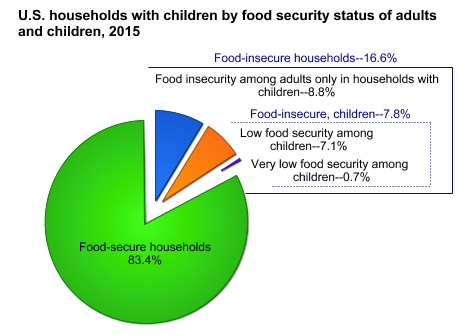
Share On Social!
Despite historic reductions reported by the United States Department of Agriculture (USDA), there are still over 42 million people in the country who are classified as food insecure. Of this number, over 13 million were children. Latinos, single-parent households, and households in rural communities are among those with the highest rates of food insecurity, the Huffington Post reports.
The USDA defines food insecurity as those households that are “uncertain of having, or are unable to acquire enough food to meet the needs of all their members.” This situation can be due to a variety of reasons, including having insufficient money or resources to obtain food, such as a loss of income or medical hardships.
Households with children are disproportionately affected by food insecurity; in 2015, children represented 44% of the beneficiaries of the Supplemental Nutrition Assistance Program (SNAP). The rate of food insecurity in households with children was also much higher (16.6%) than the national average (12.7%); this disparity was even greater in single-mother households (30.3%).
In order to reduce health disparities, it is critical to address inequities in programs, practices, and policies. Join our site, connect with others, and get involved.
According to the USDA’s recent report, “[in 2015], 8.8% of households with children, only adults were food insecure, [while] both children and adults were food insecure in 7.8 percent of households with children.” While the increase in food security for American households over the past year promising, the figures are still not as low as the 11.1% rate before the Great Recession occurred. Additionally, in 2015, as many as 1 in 7 Americans still did not have enough food to eat.
Read more about this story here.
Read stories similar to this one:
- New racial disparities program advances in North Carolina. #SaludAmerica #HealthEquity http://salud.to/2cKDU3q
- Cancer Catching Up to Heart Disease as No. 1 Killer #SaludAmerica #HealthEquity http://salud.to/2bzuySR
Explore More:
Healthy Families & SchoolsBy The Numbers
142
Percent
Expected rise in Latino cancer cases in coming years




